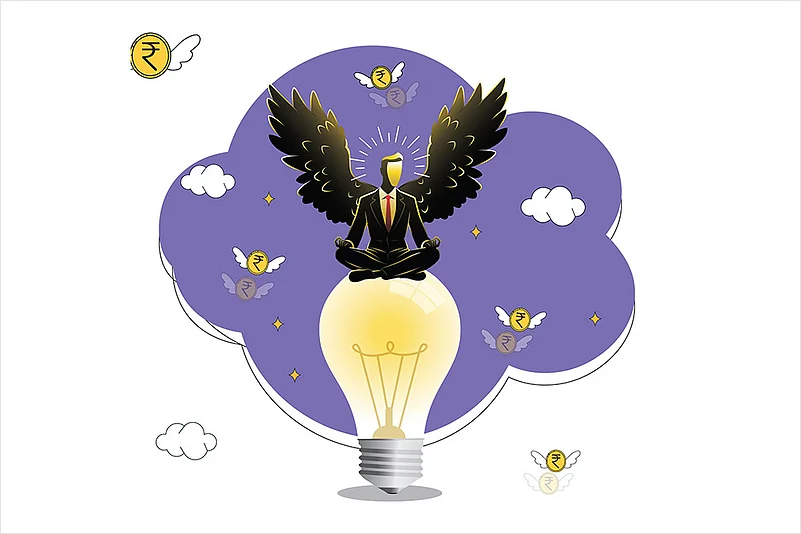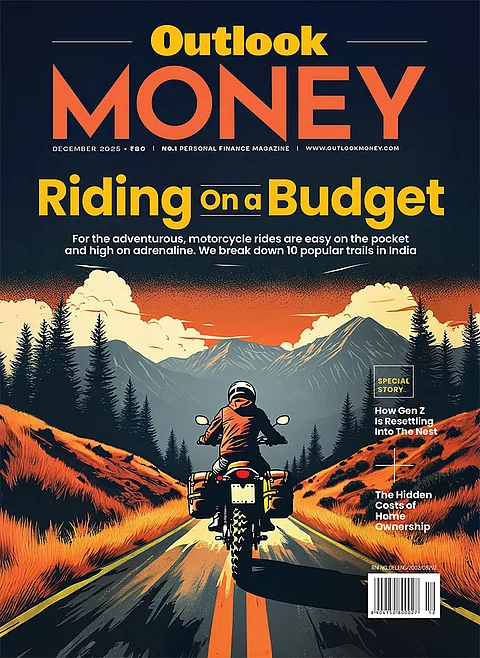Financial freedom is perhaps easier to achieve for the rich. The ones who can afford all the luxuries they can think of and still be able to fund themselves for a lifetime, without earning a dime. But what happens to a middle-class family? Can they really achieve financial freedom and of what kind?
Before cracking open that question let’s assess what does financial freedom mean for the middle-class, who are broadly defined as having a fixed income that is enough to cater to the needs of the family.
“For India’s middle-class, it’s about peace of mind, smart choices, and securing a future without compromising today,” says Madhupam Krishna, Securities and Exchange Board of India (Sebi) registered investment advisor (RIA) and chief planner, WealthWisher Financial Planner and Advisors based in Jaipur, Rajasthan.
Says Amit Suri, mutual fund distributor, certified financial planner and founder of AUM Wealth, a wealth management firm: “For most Indians, financial freedom means being able to handle life’s uncertainties, such as medical emergencies or the loss of a loved one, without constantly worrying about money. It’s also about knowing your key goals are taken care of.”
Attaining even that state is a difficult task, because apart from fighting the behavioural biases we have talked about earlier (page 12), they also have to fight demons like job uncertainty, lack of back-up, an emergency creeping up on their finances and so on. However tough that may be, it is attainable despite the obstacles on the way. Let’s explore how can one go about it.
The Key Steps
Realistically, a middle-class family’s first step to financial freedom starts with achieving the following.
Zero Debt: The middle-class needs to get rid of debt which creeps in the form of loans for home, gadgets and others. “The middle class often finds EMIs burdensome. They need to get rid of credit card traps or unsecured loans. They know these are toxic, and the EMIs are a huge mental stress,” says Krishna.
However, the present pushy lending landscape doesn’t make it easy for them. Credit card traps or unsecured loans have the potential to throw well-laid plans astray, besides adding to mental stress.
Emergency Fund: They must strive to save up expenses that will last 6-12 months to be ready for emergencies. That’s because, typically, middle-class families do not have ancestral or other wealth to fall back on.
Protected Future: They also need to financially cushion themselves against health- or life-related setbacks. Medical bills can empty out your savings in no time if a life-threatening condition occurs and the loss of the family’s breadwinner can leave the other members destitute. Buying life and health insurance can bring down these risks.
Financial Planning: They must set clear financial goals and work towards saving for them. These could be home ownership, children’s education, small holidays, asset purchases, retirement and so on.
Medical bills can empty out savings in no time if a life-threatening condition occurs, and the loss of the family’s breadwinner can leave the other members destitute
Says Col. Sanjeev Govila (retd), certified financial planner, CEO, Hum Fauji Initiatives, a financial advisory firm: “Financial freedom begins with structure and stability, not sacrifice, because sacrifice is not sustainable. First, create a safety net—an 18-month emergency fund, health insurance for the family, and adequate term insurance coverage. Then, automate savings: channel 25 per cent of the income into systematic investment plans (SIPs) across equity and hybrid funds.”
It is also important to start this investment journey as early as possible. “When you plan your investments, ensure that you cut down on wasteful expenditures that creep in on their own. Always plan for emergencies by taking insurance and creating a buffer fund. Surplus funds should not be splurged on unwanted desires,” says Gaurav Goel, entrepreneur and Sebi RIA.
Obstacles On The Way
It’s common to go off track and there could be various reasons for that.
Rising Cost: Middle-class parents usually invest heavily in education, which they traditionally see as their biggest asset. The problem is: from tuition fees to coaching classes, costs are rising rapidly. “Not just education, even medical expenses are rising silently. At the same time, insurance coverage is getting dearer, and policy approvals and claim percentages are getting lower,” says Krishna. All this forces households to cut back from their savings.
Uncertain Income: Even as costs climb, incomes remain uncertain. With the advent of artificial intelligence (AI), many professionals feel insecure in their roles, as automation and outsourcing are reshaping industries overnight. On top of that, frequent layoffs, contract-based employment, and under-employment create a precarious income stream. This uncertainty hampers long-term financial planning, savings, and investments.
“Salaries haven’t kept pace with inflation, and more people are relying on credit to cover essentials. India’s household savings are at a 50-year low, according to data released by the Reserve Bank of India in September 2023,” says Krishna. When individuals are unsure about job continuity, they tend to prioritise immediate consumption over savings, weakening their ability to build wealth. Persistent insecurity can lead to anxiety, reducing productivity and jeopardising job prospects, creating a vicious cycle.
Lack Of Knowledge: When investing, many families end up ignoring key factors such as inflation, and how they can erode investment returns. Other factors like delaying the process of investments, ignoring insurance, taking too much debt, not being ready for emergencies and so on can also affect the outcome. For instance, saving in an instrument such as a fixed deposit (FD) will most likely not let you reach your retirement or financial freedom goal. That’s because tax and inflation will reduce the yields drastically compared to other assets.
Social And Peer Pressure: Unwanted pressure due to social expectations can significantly disrupt effective long-term financial planning. People often spend heavily on events like elaborate weddings, luxury lifestyles, or premium education of their children to boost their social standing. These expenses are usually high and recurrent, which can divert funds away from savings, investments, or a retirement kitty.
Expenditures undertaken to impress peers can also spoil the financial equation. Expensive purchases or throwing grand parties may provide immediate social validation but not long-term security. Large ongoing social expenses can tie up income, reducing the capacity to respond to financial emergencies or invest for future needs.
Liabilities: In the pursuit of maintaining appearances, many individuals fund their lifestyle via loans, which can lead to debt accumulation and added stress.
In fact, the big Indian dream of owning a house can be another drain on your income and savings. With property prices going up, the EMIs will not leave enough room to juggle other expenses. Add to it the job uncertainty, and finances can go north very quickly.

High Emotional Cost: But there is a problem in focusing too much on wealth creation as well. In pursuit of financial freedom, middle-class Indians often sacrifice emotional well-being by enduring stress. Just to save enough, they may make social and lifestyle sacrifices, delay pleasure and entertainment or make financial compromises. In the long run, the constant pressure to meet financial goals can lead to chronic stress, anxiety, and mental fatigue. And, then stress-related medical conditions will not be far behind.
Says Krishna: “Most middle-class Indians sacrifice leisure, socialising, and quality family time while working extra hours or pursuing side incomes to make ends meet. The emotional toll leads to neglecting health, exercise, or hobbies due to excessive focus on earning and saving.”
Sacrificing comfort and immediate pleasures like taking vacations or spending on entertainment in favour of long-term financial security can also breed a sense of deprivation and feelings of inadequacy, especially when others around may not be doing the same.
What’s The Verdict?
So is it possible for the middle-class to achieve financial freedom? The picture is grim, unless one starts early, remains focused and disciplined, plans well and balances their finances and life choices carefully. The middle-class is facing a tough financial equation: rising fixed costs, stagnant income, and limited financial wiggle room. In this scenario, planning for retirement, let alone early retirement, is an uphill task, but not impossible.
Govila explains through an example. “Retiring at 45 with `4 lakh in annual expenses requires a corpus of over `1 crore even without taking the future Indian inflation into account. It’s beyond reach unless one starts early, invests aggressively, and earns consistently high returns.”
Chartered accountant Nitin Kaushik’s viral post on X contrasts “looking rich” with “being rich”. He highlights a middle‑class investor who quietly built a `25 crore portfolio while driving a modest `10 lakh car, emphasising true wealth over flashy consumption. Kaushik outlines two archetypes: one with low lifestyle costs and high equity/rental assets, and the other burdened by EMIs and status chasing.
The message resonates with thousands: real wealth brings time, freedom, and peace of mind, not prestige. Kaushik’s key advice—“if you want to be rich, buy time, freedom, and compounding”—underscores discipline and patience over appearances.
While disciplined saving, smart investing, developing multiple income sources, and living within your means can help; these are not magical solutions. Says Krishna: “They require effort, patience, good financial habits, and a bit of luck. Sometimes, people misunderstand these as ‘easy concepts’ or ‘quick money makers’, but in reality, it often takes years of consistent work.”
Finally, read books, follow finance blogs, or attend workshops. Enhance knowledge and ensure financial freedom does not remain a fantasy, but something achievable.
A Guide To Planning Early Retirement
Make a financial plan, set clear goals and targets. This will help you estimate how much you need to save and whether you can afford it. Discipline yourself so that you stick to the investment plan.
Your health insurance should be substantial too as medical inflation is high. You could divide the sum insured between a family floater policy and a super top-up policy, which has cheaper premiums.
On top of health insurance, build a medical corpus too to cover gaps such as exclusions in a policy. There are diseases that do not require hospitalisation but demand costly medications or tests on a regular basis.
Just before taking early retirement, ensure you have a larger emergency fund than what is normally advised as you will have lower or nil income after early retirement.
Do not forget to buy adequate life insurance for an adequate time period to support your dependants in case something happens to you.
Sometimes you may have to make adjustments to your lifestyle to decrease the cost of choosing to retire early. The less you spend, the more you will be able to save.
You could reinterpret retirement by ensuring that you don’t just stop working but opt for a part-time option that pays until you reach the proper retirement age.
Even if you do not intend to work post retirement, ensure you figure out a meaningful activity that you can embrace such as a hobby, public service, or others.
Plan for this activity much in advance. Loneliness is a silent killer and retirement is also about retiring from your regular routine. Figuring out something at this stage may be more difficult than you imagine.
Last but not the least, share your plans with your family and ensure they are on board with compromising on their lifestyle or allowing a large chunk of the income to be invested regularly.
meghna@outlookindia.com














